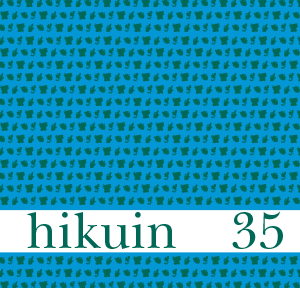Regionalitet og sproglig kontakt i vikingetid og middelalder
Strofer om silke og ærlig pæl
Abstract
Regionality and language contact during the Viking Age and the Middle Ages
By Peder Gammeltoft and Jakob Povl Holck
This article is a comparative analysis of two important influences on Southern Scandinavia during the Viking Age and the early Middle Ages, namely the Anglo-Saxon and the Slavic (Wendish) cultures. The historical and archaeological evidence for these two influences are well known and established beyond doubt. But how do these influences manifest themselves in the linguistic landscape in Southern Scandinavia – are they regional in character, or even supra-regional? By paying careful attention to the linguistic differences between Scandinavian and Old English/Wendish, it is possible to establish a number of criteria by which it is possible to determine the origin of a word. The result of the analysis is that Old English has left a relatively large number of traces in the Scandinavian word stock, whereas Wendish is almost absent. By integrating place-names of Old English and Wendish origin into the survey, it is possible to modify this picture somewhat. The influence from Old English is mainly connected to learning and Christianity and to some extent to the sphere of nobility, seemingly spurred by a relatively high degree of bilingualism. The Wendish influence, on the other hand, seems to be related to a limited, but relatively concentrated settlement in Lolland, Falster and Møn in Denmark and to trade. The status of the Wendish language was however not very high, whereas Old English – being to a great extent associated with the introduction of Christianity – appears to have been of high status. The close linguistic relationship of Scandinavian with Old English may also have been a contributing factor.
References
A-S Dict. = An Anglo-Saxon dictionary, based on the manuscript collections of the late Joseph Bosworth. Edited and enlarged by T. Northcote Toller. Oxford 1882-1898 [genoptrykt 1973].
A-S Dict. Suppl. = An Anglo-Saxon dictionary, based on the manuscript collections of the late Joseph Bosworth. Supplement. T. Northcote Toller. Oxford [1921].
Baugh, A.C. og Cable, T.: A History of the English Language. 4.udg., London 1993.
Bjorvand, H. og Lindeman, F.O.: Våre arveord. Etymologisk ordbok. Instituttet for sammenlignende kulturforskning. Oslo 2000.
Brooks, N. (red.): Latin and the Vernacular Languages in Early Medieval Britain. Studies in the Early History of Britain. Leicester 1982.
Danmarks Adels Aarbog, udgivet af Dansk Adelsforening. 1884-.
Danmarks Stednavne, bd. 11. Maribo Amts Stednavne, udgivet af Stednavneudvalget ved Anders Bjerrum og Christian Lisse. København 1954.
DEO 1969 = Nielsen, N.Å.: Dansk etymologisk ordbog. 2. reviderede udgave med et tillæg. København 1969.
Fellows Jensen, G.: Scandinavian Personal Names in Lincoln and Yorkshire. København 1968.
Fellows-Jensen, G.: Scandinavian settlement names in the North-West, København 1985.
Fellows-Jensen, G.: The Vikings and their victims: the verdict of the names, Published for the College by the Viking Society for Northern Research, London 1995.
Gammeltoft, P. og Holck, J.P.: Gemstēn and Other Old English Pearls – A Survey of Early Old english Loanwords in Scandinavian, Nowele vol. 50/51 February 2007, Odense 2007, s. 131-161.
Hald, K.: Vore Stednavne. 2. reviderede og stærkt forøgede udgave. København, 1965.
Hansen, E: Rigtigt dansk, 2. udg. København 1993.
Holck, J.P. Middelalderens danske lægebog – et kontaktfænomen. Utrykt ph.d.-afhandling ved Københavns Universitet. 2002.
Jul Nielsen, B. og Pedersen, K.M.: Danske talesprog. Dialekter, Regionalsprog, Sociolekter. København 1991.
Kalkar, O.: Ordbog til det ældre danske Sprog (1300 – 1700), trykt...
ifølge Foranledning af Universitets-Jubilæets danske Samfund. København 1881-1918.
Kisbye, T.: A short history of the English language; edited by Knud Sørensen. Århus1992.
KLNM = Kulturhistorisk leksikon for nordisk middelalder : fra vikingetid til reformationstid. København 1956-1978. 21 bd.
Kristensen, M.: Fremmedordene i det ældste danske skriftsprog (før omtr. 1300). København 1906.
Kristensen, M.: Gamle danske Urtebøger, Stenbøger og Kogebøger: Harpestræng. Udgivet for Universitets-Jubilæets Danske Samfund. København 1908-1920.
Kristiansen, T., F. Gregersen, E. Møllerog I.L. Pedersen: Dansk Sproglære, København 1996.
Moth, M.: Ordbog. Uudgivet ordbog forfattet c. 1680-1719.
ODS = Ordbog over det danske Sprog, grundlagt af Verner Dahlerup, med Understøttelse af Undervisningsministeriet og Carlsbergfondet udgivet af Det danske Sprog-og Litteraturselskab. København 1918-1956.
Pedersen, A.: Anglo-Danish contact across the North Sea in the eleventh century: a survey of the Danish archaeological evidence. Scandinavian and Europe 800-1350. Contact, conflict and Coexistence. (red. J. Adams og k. Holman) Turnhout 2004, s. 43-67.
PolEO 2000 = Politikens etymologisk ordbog. København 2000.
PolNDOME 2000 = Politikens nudansk ordbog med etymologi. København 2000.
Quist, P.: Et flydende sprogsamfund? Sociolingvistikkens »sprogsamfund« historisk og teoretisk, Danske Talesprog, bind 4, Nordisk Forskningsinstitut, Afdeling for dialektforskning, København 2003, s. 37-58.
Roesdahl, E.: Denmark–England in the Eleventh Century. The growing archaeological evidence for contacts across the North Sea. Seksogtyvende tværfaglige vikingesymposium (under udgivelse).
Roesdahl, E.: Danmarks vikingetid. København 1980.
Skautrup, P.: Det danske sprogs historie, 1: Fra Guldhornene til Jyske lov. København 1944.
Sørensen, K.: Engelske lån i dansk. Dansk Sprognævns skrifter 8. København 1973.
Thomason, S.G.: On mechanisms of interference. Language and its ecology. Essays in memory of Einar Haugen. (red. S. Eliasson og E.H. Jahr) Berlin og New York 1991, s. 180-208.
Weinreich, U.: Languages in contact – Findings and problems. New York 1953.
Downloads
Published
How to Cite
Issue
Section
License
Forfatter og Forlag.





